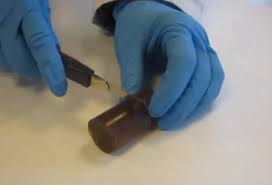Strangely enough I was in the USA last time there was a government shutdown. I was staying in New Orleans and listening to music all day every day.
At some point during the 6 week excursion I decided to go to Houston, to see the Space Station. That very room, seen by millions on TV as Niel Armstrong spoke from the Moon, those rows of presumably computerized desks, where history was made.
It is a long trip from New Orleans, I traveled by Greyhound bus. The land is swampy as you pass through Louisiana, and on to Texas. The road is raised above the water by just a few feet, on bridges that are miles long. It was a long ride, about 350 miles, on a bus, at 50 miles per hour, but it would be worth it, I was sure.
I got off the bus and made my way to the space center. There was a rocket lying on the grass outside, absolutely enormous, a real rocket! My pace quickened as did my heartbeat, I ran to the gate.
Closed.
The Space Center Houston, doorway to NASA’s Johnson Space Center, was closed until further notice due to the partial governmental closure.
17 years on it is once more closed. But closing a tourist attraction is one thing, what I hadn’t realized all those years ago was that NASA itself had shut down, and it’s closed today too.
18000 NASA employees, about 97% of the entire workforce, are sitting at home today, unpaid, and without any idea of when their work will resume. All communication from NASA to the public has stopped, Tweet accounts are closed, and they can no longer reply to emails.
Reassuringly though the few people left at work are continuing to monitor the skies for objects that may crash into the International Space Station killing all aboard, and larger objects that may pass close to Earth, Phew!
The astronauts working on the Space Station will continue their work, and mission control will be open to support them. They have plenty of food and water so they should be OK for some time.
Other NASA spacecraft, like the Curiosity Rover on Mars and the New Horizons craft hurtling toward Pluto, will be largely left to their own devices (literally) during the shutdown. I believe parking is cheap on Mars anyway, although maintenance is high.
All of this comes just a month after NASA announced that the Voyager space craft, launched in 1977, has left the solar system. It continues to send back data, (although I am not sure if it will now be piling up like emails after a holiday), and 6 days after the now dormant Mars rover vehicle discovered large amounts of water, meaning that pioneers could extract water from the ground to use for fuel and to drink.
This government shutdown is having a huge but largely unseen effect upon science and technology development, as the organizations that are effected are some of the largest and most advanced in the world, not to mention creating a few disappointed tourists.






